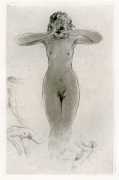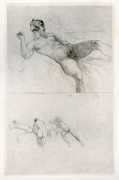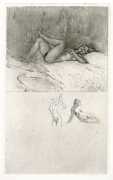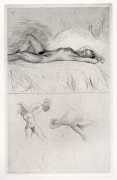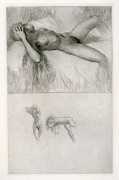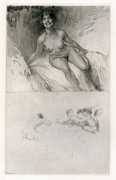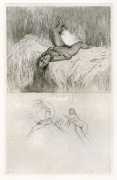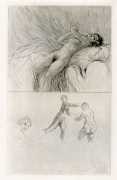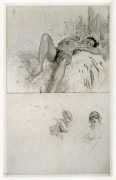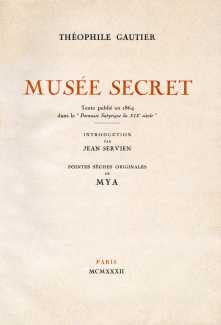 Théophile Gautier’s 1864 ode in praise of pubic hair, Musée secret (Secret Museum), is a heartfelt response to the smooth marble nudity of classical female nude sculpture, a sexless naked tradition followed unquestioningly by nineteenth-century artists and sculptors. The poem begins:
Théophile Gautier’s 1864 ode in praise of pubic hair, Musée secret (Secret Museum), is a heartfelt response to the smooth marble nudity of classical female nude sculpture, a sexless naked tradition followed unquestioningly by nineteenth-century artists and sculptors. The poem begins:
Des déesses et des mortelles
Quand ils font voir les charmes nus
Les sculpteurs grecs plument les ailes
De la colombe de Vénus.
Sous leur ciseau s’envole et tombe
Le doux manteau qui la revêt
Et sur son nid froid la colombe
Tremble sans plume et sans duvet.
Ô grands païens, je vous pardonne !
Les Grecs enlevant au contour
Le fin coton que Dieu lui donne
Otaient son mystère à l’amour ;
Mais nos peintres tondant leurs toiles
Comme des marbres de Paros,
Fauchent sur les beaux corps sans voiles
Le gazon où s’assied Éros.
which in English translates as:
Goddesses and mortals,
When they display their naked charms,
The Greek sculptors pluck the wings
Of the dove of Venus.
Under their scissors flies and falls
The soft coat which covers her,
And on its cold nest the dove
Trembles without feathers or soft down.
O great pagans, I forgive you!
The Greeks, removing from the body
The fine cotton that God gives it,
Removed all love’s mystery;
And now our painters, mowing their canvases
Like marbles from Paros,
Mow these beautiful bodies, now without veils,
The grass where Eros sits.
Given the subject matter, it is rather surprising that Gautier’s poem has not attracted more illustrators. Henri le Riche was clearly in full agreement about the ‘unmown mound’, as is clear in this series of fine engravings.
Musée secret, with an introduction by Jean Servien, was privately published in Paris, almost certainly by le Riche himself, in a limited numbered edition of 1001 copies. The engravings appear under the enigmatic pseudonym ‘Mya’; the significance of which to le Riche we can only guess at.


